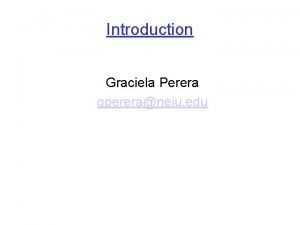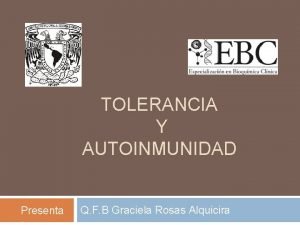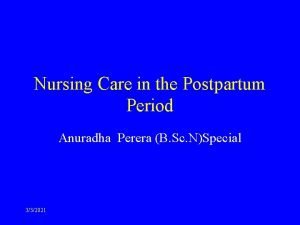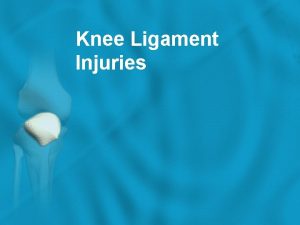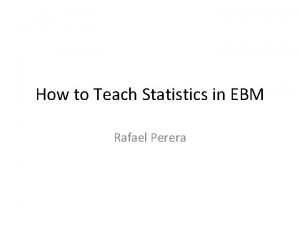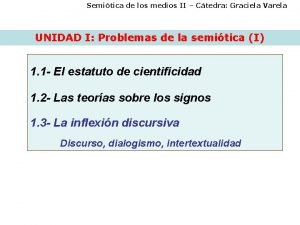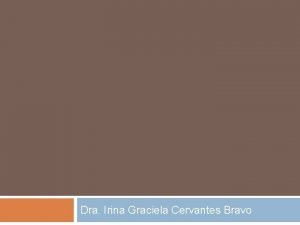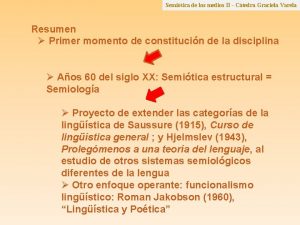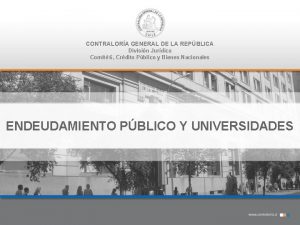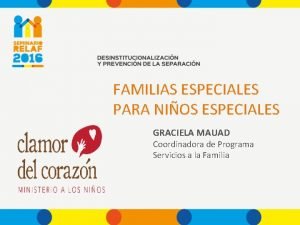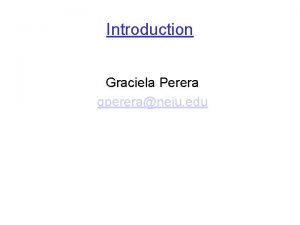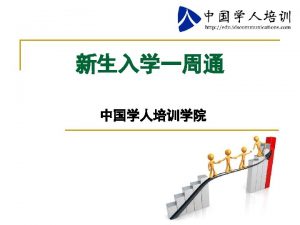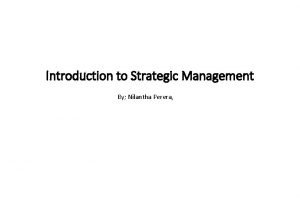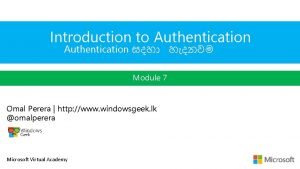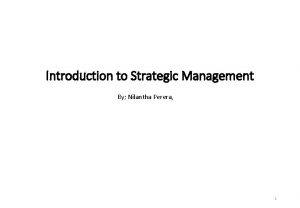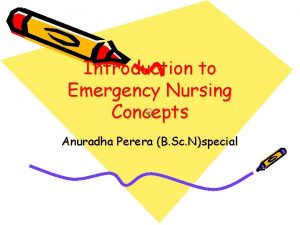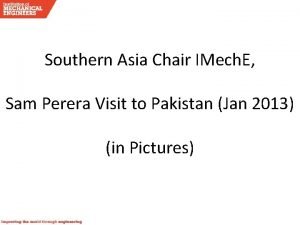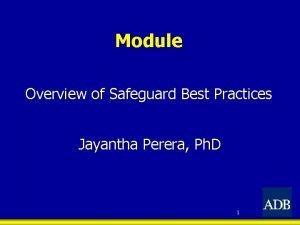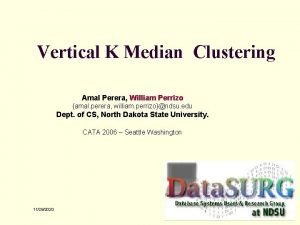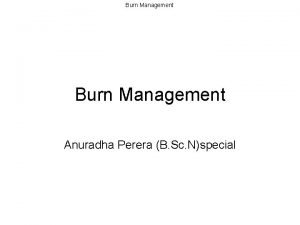Introduction Graciela Perera gpereraneiu edu Chapter 1 Introduction

















- Slides: 17

Introduction Graciela Perera gperera@neiu. edu

Chapter 1: Introduction Our goal: Overview: q get “feel” and q what’s the Internet terminology q more depth, detail later in course q approach: v use Internet as example q what’s a protocol? q network edge q network core q performance: loss, delay q protocol layers, service models q network modeling Introduction 1 -2

What’s the Internet: “nuts and bolts” view q millions of connected computing devices: hosts = end systems q running network apps q communication links v v router server workstation mobile local ISP fiber, copper, radio, satellite transmission rate = bandwidth regional ISP q routers: forward packets (chunks of data) company network Introduction 1 -3

“Cool” internet appliances Web-enabled toaster + weather forecaster IP picture frame http: //www. ceiva. com/ World’s smallest web server http: //www-ccs. umass. edu/~shri/i. Pic. html Internet phones Introduction 1 -4

What’s the Internet: “nuts and bolts” view q protocols control sending, receiving of msgs v e. g. , TCP, IP, HTTP, FTP, PPP q Internet: “network of router server workstation mobile local ISP networks” v v loosely hierarchical public Internet versus private intranet q Internet standards v RFC: Request for comments v IETF: Internet Engineering Task Force regional ISP company network Introduction 1 -5

What’s the Internet: a service view q communication infrastructure enables distributed applications: v Web, email, games, ecommerce, file sharing q communication services provided to apps: v v Connectionless unreliable connection-oriented reliable Introduction 1 -6

What’s a protocol? human protocols: q “what’s the time? ” q “I have a question” q introductions … specific msgs sent … specific actions taken when msgs received, or other events network protocols: q machines rather than humans q all communication activity in Internet governed by protocols define format, order of msgs sent and received among network entities, and actions taken on msg transmission, receipt Introduction 1 -7

Chapter 1: roadmap 1. 1 What is the Internet? 1. 2 Network edge 1. 3 Network core 1. 4 Network access and physical media 1. 5 Internet structure and ISPs 1. 6 Delay & loss in packet-switched networks 1. 7 Protocol layers, service models 1. 8 History Introduction 1 -8

A closer look at network structure: q network edge: applications and hosts q network core: routers v network of networks v q access networks, physical media: communication links Introduction 1 -9

The network edge: q end systems (hosts): v v v run application programs e. g. Web, email at “edge of network” q client/server model v v client host requests, receives service from always-on server e. g. Web browser/server; email client/server q peer-peer model: v v minimal (or no) use of dedicated servers e. g. Skype, Bit. Torrent, Ka. Za. A Introduction 1 -10

Chapter 1: roadmap 1. 1 What is the Internet? 1. 2 Network edge 1. 3 Network core 1. 4 Network access and physical media 1. 5 Internet structure and ISPs 1. 6 Delay & loss in packet-switched networks 1. 7 Protocol layers, service models 1. 8 History Introduction 1 -11

The Network Core q mesh of interconnected routers q the fundamental question: how is data transferred through net? v circuit switching: dedicated circuit per call: telephone net v packet-switching: data sent thru net in discrete “chunks” Introduction 1 -12

Network Core: Circuit Switching End-end resources reserved for “call” q link bandwidth, switch capacity q dedicated resources: no sharing q circuit-like (guaranteed) performance q call setup required Introduction 1 -13

Network Core: Packet Switching each end-end data stream divided into packets q user A, B packets share network resources q each packet uses full link bandwidth q resources used as needed Bandwidth division into “pieces” Dedicated allocation Resource reservation resource contention: q aggregate resource demand can exceed amount available q congestion: packets queue, wait for link use q store and forward: packets move one hop at a time v Node receives complete packet before forwarding Introduction 1 -14

Packet switching versus circuit switching Packet switching allows more users to use network! q 1 Mb/s link q each user: v 100 kb/s when “active” v active 10% of time q circuit-switching: v 10 users N users 1 Mbps link q packet switching: v with 35 users, probability > 10 active less than. 0004 Introduction 1 -15

Packet switching versus circuit switching Is packet switching a “slam dunk winner? ” q Great for bursty data resource sharing v simpler, no call setup q Excessive congestion: packet delay and loss v protocols needed for reliable data transfer, congestion control q Q: How to provide circuit-like behavior? v bandwidth guarantees needed for audio/video apps v still an unsolved problem (chapter 7) v Q: human analogies of reserved resources (circuit switching) versus on-demand allocation (packet-switching)? Introduction 1 -16

Network Taxonomy Telecommunication networks Circuit-switched networks FDM TDM Packet-switched networks Networks with VCs Datagram Networks • Datagram network is not either connection-oriented or connectionless. • Internet provides both connection-oriented (TCP) and connectionless services (UDP) to apps. Introduction 1 -17
 Graciela perera
Graciela perera Tolerancia y autoinmunidad
Tolerancia y autoinmunidad Fabiana sofia perera
Fabiana sofia perera Bubble he assessment
Bubble he assessment Apley test
Apley test Statistics
Statistics Hypogonism
Hypogonism Behavior driven development
Behavior driven development Dinuka perera
Dinuka perera Graciela varela castro
Graciela varela castro Pintora boliviana
Pintora boliviana Irina graciela cervantes bravo
Irina graciela cervantes bravo Gracielavarelaa
Gracielavarelaa Graciela rueda
Graciela rueda Graciela lepe uribe
Graciela lepe uribe Graciela grosso
Graciela grosso Graciela mauad
Graciela mauad Graciela de filippis
Graciela de filippis
